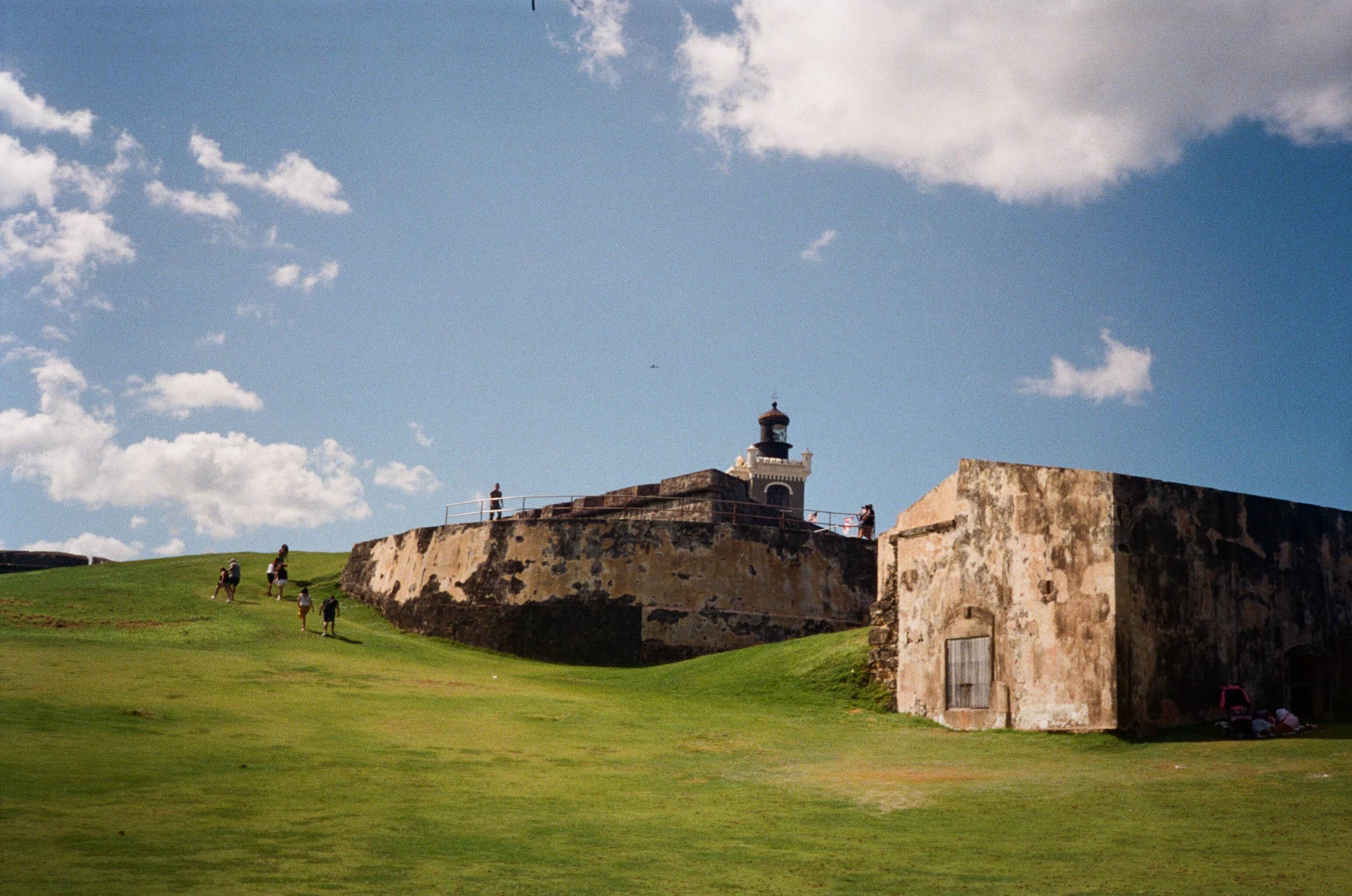svelte-lazy-loader
By Sawyer Click
A component library for effortlessly loading media using a shared IntersectionObserver instance if native lazy-loading doesn’t exist.
Table of Contents
Installation
npm install svelte-lazy-loaderComponents
Image
Usage
An expansion of the HTMLImageElement that, if a browser cannot natively lazy-load, uses a shared IntersectionObserver instance to performantly lazy-load images. This components takes several native attributes and passes them through to the underlying HTMLImageElement. A few component-specific props are available to facilitate lazy-loading.
The out-of-the-box implementation of this component features a blur transition effect. The CSS can be altered using Svelte’s style props.
<script>
import { Image } from 'svelte-lazy-loader';
</script>
<Image src="images/san-felipe-del-morro-castle.jpg" alt="A few tourists walk up the lawn to the side of the old stone San Felipe del Morro Castle in San Juan, Puerto Rico" />
API
| Parameter | Default | Description |
|---|---|---|
| src | placeholder | Defined as usual. The path to the image. Defaults to the {placeholder} prop. |
| srcset | src | Defined as usual. If passed, defines which images should be presented. Defaults to the src prop, which defaults to the placeholder prop. |
| loading | ‘lazy’ | Defined as usual. If lazy, lazy-load image through native browser functionality if it exists or through IntersectionObserver if it doesn’t. If eager, image is loaded immediately. |
| alt | ’ ’ | Defined as usual. A description of the image. |
| draggable | false | Defined as usual. If false, the element can not be dragged. If true, the element can be dragged. |
| decoding | ‘async’ | Defined as usual. If async, decode the image asynchronously to reduce delay in presenting other content. If sync, decode the image synchronously for atomic presentation with other content. If default, default mode, which indicates no preference for the decoding mode. The browser decides what is best for the user. |
| width | ‘100%’ | Defined as usual. An integer value indicating the width of the image. |
| height | ‘100%’ | Defined as usual. An integer value indicating the height of the image. |
| classes | ’ ’ | Additional classes to be added to the <img> element. |
| placeholder | ‘data:image/png;base64,iVBORw0KGgoAAAANSUhEUgAAAAEAAAABCAYAAAAfFcSJAAAADUlEQVR42mP8+fOvJAAI7AMKHxaZiQAAAABJRU5ErkJggg==’ | If loading='lazy', this value is the placeholder until the image is loaded. Accepts strings, including paths or base64 images such as the default. |
| on:load | event | Defined as usual. An event forwarded from the <img/> element when the image is loaded. |
| —transition | ‘filter cubic-bezier(0.4, 0, 0.2, 1) 300ms’ | The CSS transition that occurs on image load. |
| —filter | ‘blur(2px)’ | The filter to apply to the image when unloaded. Transitions out when image is loaded. |
Picture
Usage
Similarly to the above Image component, this component uses a shared IntersectionObserver instance to performantly lazy-load images if native lazy-loading doesn’t exist. Sources can be passed through a default slot while <img/> attributes are passed as props using the API below. <source> elements’ srcset attributed should be set at data-srcset.
Similar to above, the out-of-the-box implementation of this component features a blur transition effect. The CSS can be altered using Svelte’s style props.
This example uses vite-imagetools create images at compile-time via sharp.
Note: The srcset attribute for <source> elements should be set at data-srcset for lazyloading to work properly.
<script>
import { Picture } from 'svelte-lazy-loader';
import blurred from '$lib/site/san-felipe-del-morro-castle.jpg?w=100&jpg&blur=10'
import sources from '$lib/site/san-felipe-del-morro-castle.jpg?format=webp;avif;jpg&metadata'
</script>
<Picture placeholder={blurred} src="images/san-felipe-del-morro-castle.jpg" alt="A few tourists walk up the lawn to the side of the old stone San Felipe del Morro Castle in San Juan, Puerto Rico">
{#each sources as { src, format }}
<source data-srcset={src} type="image/{format}"/>
{/each}
</Picture>
API
| Parameter | Default | Description |
|---|---|---|
| src | placeholder | Defined as usual. The path to the image. Defaults to the {placeholder} prop. |
| loading | ‘lazy’ | Defined as usual. If lazy, lazy-load image through native browser functionality if it exists or through IntersectionObserver if it doesn’t. If eager, image is loaded immediately. |
| alt | ’ ’ | Defined as usual. A description of the image. |
| draggable | false | Defined as usual. If false, the element can not be dragged. If true, the element can be dragged. |
| decoding | ‘async’ | Defined as usual. If async, decode the image asynchronously to reduce delay in presenting other content. If sync, decode the image synchronously for atomic presentation with other content. If default, default mode, which indicates no preference for the decoding mode. The browser decides what is best for the user. |
| width | ‘100%’ | Defined as usual. An integer value indicating the width of the image. |
| height | ‘100%’ | Defined as usual. An integer value indicating the height of the image. |
| classes | ’ ’ | Additional classes to be added to the <picture> element. |
| placeholder | ‘data:image/png;base64,iVBORw0KGgoAAAANSUhEUgAAAAEAAAABCAYAAAAfFcSJAAAADUlEQVR42mP8+fOvJAAI7AMKHxaZiQAAAABJRU5ErkJggg==’ | If loading='lazy', this value is the placeholder until the image is loaded. Accepts strings, including paths or base64 images such as the default. |
| on:load | event | Defined as usual. An event forwarded from the <img/> element inside the <picture> element when the image is loaded. |
| —transition | ‘filter cubic-bezier(0.4, 0, 0.2, 1) 300ms’ | The CSS transition that occurs on image load. |
| —filter | ‘blur(2px)’ | The filter to apply to the image when unloaded. Transitions out when image is loaded. |